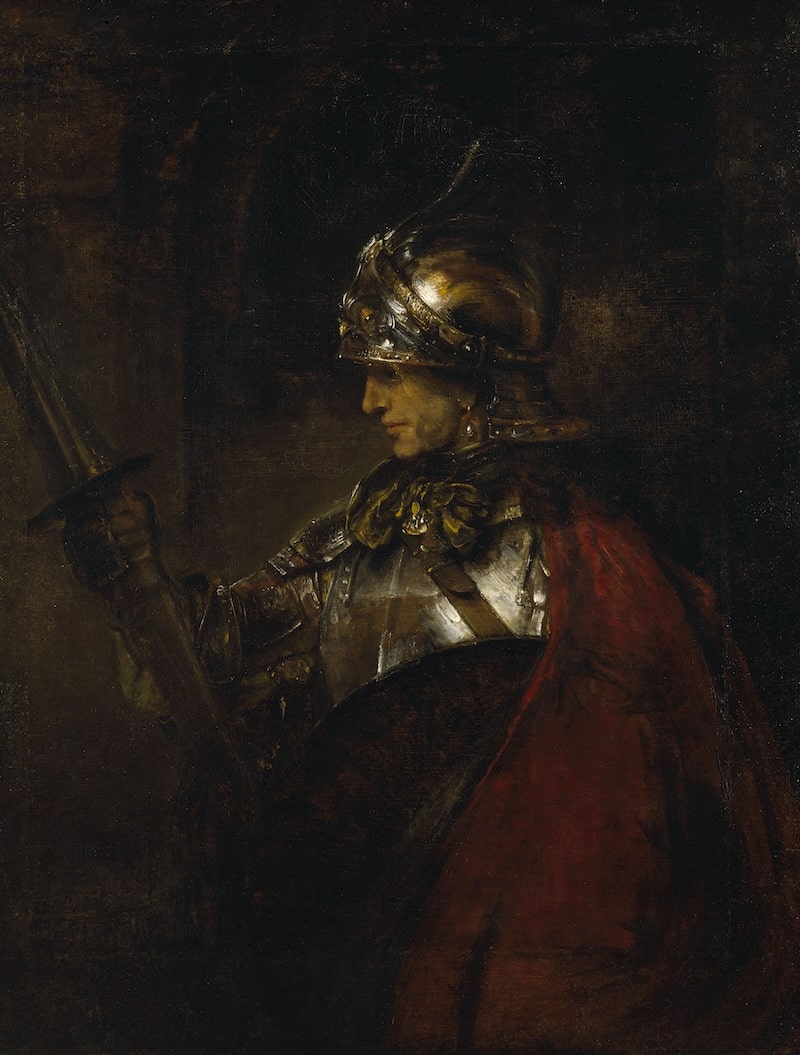A Man in Armour, 1655 by Rembrandt

Although A Man in Armour is one of the artist's best pictures of this type, the numerous problems which surround it have helped to confuse rather than emphasise its extraordinary quality. It is almost certain that this is the Alexander the Great asked of Rembrandt by an Italian nobleman Don Ruffio, because of the strips of canvas which have been added on all sides of the picture, thus throwing it completely off balance. It just so happens that on receiving the Alexander Don Ruffio was not satisfied with it as it was not of the same dimensions as his Aristotle. He therefore insisted that the picture should be enlarged to match. The demanding patron had already asked Guercino for a further philosopher, of which only a drawing survives, and he forced the distinguished Italian painter to produce his philosopher in his earlier, darker, manner in order that it should match his growing collection of Rembrandts.
With great power and poignancy, Rembrandt has depicted a young man literally weighed down with heavy armour and weapons, and appearing to have profound thoughts of battles ahead. Significantly, this soldier's armour, circular shield and lance are all of a style essentially obsolete by the time the painting was made. This suggests that he is to be understood as a figure from the past. His helmet, evoking antiquity, is an invention by the artist, mixing the rear neck-guard of a contemporary cavalry helmet with a brow plate and crest in a style then considered to be characteristically classical.




















